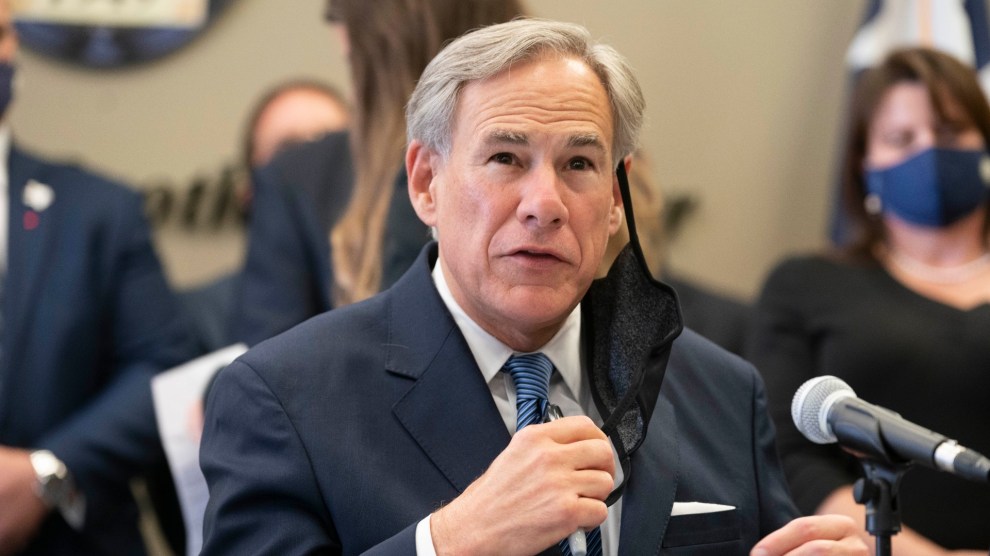
Bob Daemmrich/Zuma
In a contradiction of federal guidance, Texas Gov. Greg Abbott and Mississippi Gov. Tate Reeves announced Tuesday that their states will lift their respective mask mandates and allow businesses to operate at full capacity.
“I just announced Texas is OPEN 100%.” Abbott tweeted. “EVERYTHING.” Minutes later, Reeves posted a similar tweet: “Our hospitalizations and case numbers have plummeted, and the vaccine is being rapidly distributed. It is time!”
I just announced Texas is OPEN 100%.
EVERYTHING.
I also ended the statewide mask mandate.
— Greg Abbott (@GregAbbott_TX) March 2, 2021
Starting tomorrow, we are lifting all of our county mask mandates and businesses will be able to operate at full capacity without any state-imposed rules. Our hospitalizations and case numbers have plummeted, and the vaccine is being rapidly distributed. It is time!
— Tate Reeves (@tatereeves) March 2, 2021
As I wrote last month, this is exactly what public health experts have warned against doing, given the possibility of a surge in cases driven by new coronavirus variants. While there is reason to be hopeful—vaccines are here—now isn’t the time to let our guard down, they said. In fact, they told me, easing restrictions now could give the virus even more opportunity to accumulate dangerous mutations.
I talked to three experts: Joseph Fauver, a genomic epidemiologist and associate research scientist at the Yale School of Public Health, Sarah Otto, an evolutionary biologist and a professor in the Department of Zoology at the University of British Columbia, and John Swartzberg, a clinical professor emeritus specializing in infectious diseases and vaccinology at UC Berkeley’s School of Public Health. They told me that relaxing restrictions now could seriously impede our progress in fighting the virus:
Even with a more transmissible virus, all three experts agree, hope is not lost. “My answer is to continue doing what we know works, which is wearing a mask, social distancing, not spending unmasked time indoors with people outside of your immediate household or your bubble, what have you,” Fauver says.
“My view of it is that if we have more transmissible strains than the standard strains circulating now, it means that we need to double down on everything we do to prevent getting infected,” Swartzberg says, echoing Fauver. For instance, Swartzberg says he’s considering going grocery shopping a little less often and combining trips to the pharmacy. “You just have to be upping the ante right now.”
Vaccinations are also key. The faster we vaccinate, the fewer chances these variants have to potentially spread and evolve. “How can we keep our vaccines working for longer?” Otto says. “We can bring the case numbers down, give evolution less opportunity.” Data is limited, but so far, it seems our vaccines are effective against the new variants, although possibly not to the same degree as with previous versions.
Federal officials have issued similar warnings. As Dr. Anthony Fauci explained on CBS’s Face the Nation Sunday, “Right now, as we are going down [in COVID cases] and plateauing is not the time to declare victory—because we are not victorious yet…particularly with the variants that are circulating in various parts of the country.” And on Friday, CDC Director Rochelle Walensky said, “Things are tenuous. Now is not the time to relax restrictions.”
Texas’ policy change will go into effect next week. Mississippi’s goes into effect tomorrow.













